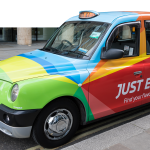CX comes first at ‘hypergrowth’ startup Turo

The world of technology is no stranger to fast growth. The sector is awash with companies rising (and falling) at a head-spinning pace.
In this highly competitive arena, disruptive ambitions and VC investment combine to create ‘rapid growth’ companies. With compound annual growth rates (CAGR) 20 to 40 percent, these businesses are doubling revenue every three to four years.
But even amid these staggering growth curves, other companies are climbing yet higher and faster. These are the mighty ‘hypergrowth’ companies with CAGRs exceeding 40 percent, or doubling revenue every two years or less.
“I confess I hadn’t questioned the definition before,” Turo President, Alex Benn, told TechHQ.
Turo is a peer-to-peer carsharing platform; commentators often compare it to an “Airbnb for cars”. It’s also a hypergrowth business. While the private company doesn’t disclose specific numbers, Benn says that in his seven-year tenure, Turo has enjoyed “substantially higher growth rates than 40 percent.”
Turo was founded by Harvard Business School grad, Shelby Clark, in 2010. An “avid user” of carsharing firm Zipcar, one evening, Clark braved sleet and snow to collect a vehicle he’d reserved on the platform. Looking at the cars parked on the street around him on his journey, he thought ‘if only I could just borrow one of these’.
YOU MIGHT LIKE

Just Eat CISO: How to earn respect in cybersecurity
Since that idea ten years ago, Turo boasts more than 10 million users in four countries, roughly half gathered in just the last year. Its mission is to change the economics of car ownership; turning a car from an asset that sits idle most of the time, depreciating, into something that can pay for itself.
A laser focus on customers has been key to success, Benn explains— both for vehicle hosts, and the guests using them— to ensure there is “compelling value” and “delightful user experience” on both sides of the marketplace.
For guests, that means focusing on “price, selection and convenience”.
Cars hired through the platform are typically a third cheaper than traditional car rental. It has 850 makes and models on the site and allows customers to search for vehicles by specific criteria, including hybrid or electric.
“Convenience has meant focusing on customer experience [CX] and taking what’s traditionally been an offline and painful process— filling in forms, waiting at a car rental counter— and bringing it online and removing friction, “ says Benn.
“People can complete our whole process through the app, we support features like delivery where the host will show up right at the curbside hand the guest the keys, and they’re away.”
From its early days Turo has listened to what the marketplace is asking for, evolving its experience to leverage and respect those needs to put CX at the heart of the business.
Benn’s advice is to “listen to the customer, and always try to do right by them,” even if it means developing your business model— an easier concept said than done.
Not long after it launched, Turo noticed users were listing cars in multiple locations or offering to deliver the vehicle directly to customers. At first, it began shutting those listings down, because it didn’t fit with its model.
“We started listening better, changed the product and policies to facilitate a better delivery experience, and now delivery is a major portion of our business.”
YOU MIGHT LIKE

The traits that make a successful CXO
There were roughly 100 cars in two cities in the US when Benn joined Turo. Now there are 350,000 listed in over 5,500 cities across the US, Canada and the UK. Maintaining that trajectory has not come without challenges.
As the company has scaled, maintaining the same mindset, agility and culture has required continual investment. At each new level of scale, old processes and approaches break down, requiring revision or replacement entirely.
“What works at 25 people usually doesn’t at 100, and surely won’t at 500,” says Benn.
The same applies to Turo’s customers. As the company matures and grows in popularity, it needs to continually enhance its service to meet and exceed customer expectations.
“While your early adopters may be more forgiving of the shortcomings of a nascent product, as you get closer and closer to mass market scale, the expectations constantly rise,” says Benn. “All aspects of the experience must continue to improve to outpace those expectations.”









